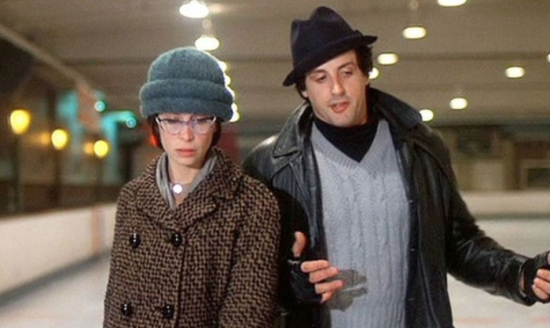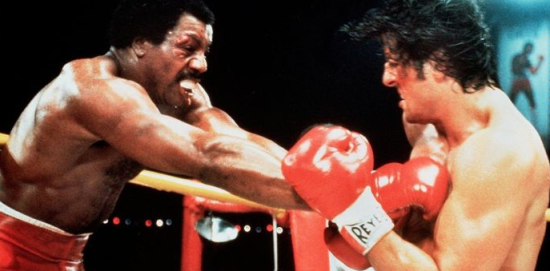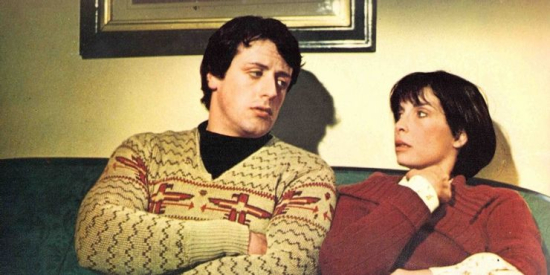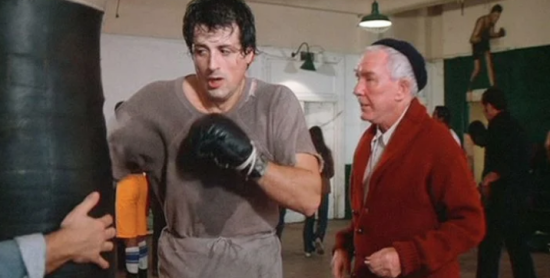 Sylvester Stallone’s breakout sports drama did more than put the inspired screenwriter and earthy method actor on Hollywood’s A-list. It led to one of its most successful franchises with six well-received features released over a period of 20 years.
Sylvester Stallone’s breakout sports drama did more than put the inspired screenwriter and earthy method actor on Hollywood’s A-list. It led to one of its most successful franchises with six well-received features released over a period of 20 years.
If Stallone’s meathead portrayal of a would-be boxing contender is reminiscent of Marlon Brando in “A Streetcar Named Desire“ or “On the Waterfront,” the hat-tip is intentional. Stallone makes his homage to Brando clear. His version of Brando’s famous “Stella”-yell (from “Streetcar”) is an essential part of this film’s cathartic climax, and it is a doozy.
Talia Shire’s Adrian is on the receiving end of her lover boy’s impatient call. Like Brando’s early career characters, Rocky is a sensitive hulk whose inarticulateness expresses more than a dictionary’s worth of quotations. This is a character you feel down to your toes.
Stallone’s humble pugilist lives in Philadelphia’s impoverished mean streets that he traverses with a heavy sense of loneliness that matches his lumbering physicality. Rocky Balboa (aka “The Italian Stallion”) is a salt-of-the-earth literary creation who keeps his ambitions within reason, unlike the 21st century’s generations of self-obsessed cellphone users who imagine that every selfie they take will usher them into a world of wealth and fame.
Rocky is committed to boxing’s rough demands of taking and delivering punches in smalltime bouts that pay peanuts. “Rock” makes his rent by working as a thumb-breaking collector for a smalltime mobster (played by the ubiquitous character actor Joe Spinell). Rocky’s gym trainer Mickey (Burgess Meredith) kicks him out of his gym as a result. Cigarettes and beer help Rocky weather his dark days. For his part, Burgess Meredith carries the cinematic weight of two actors when he takes over as Rocky’s trainer when the chips are down.
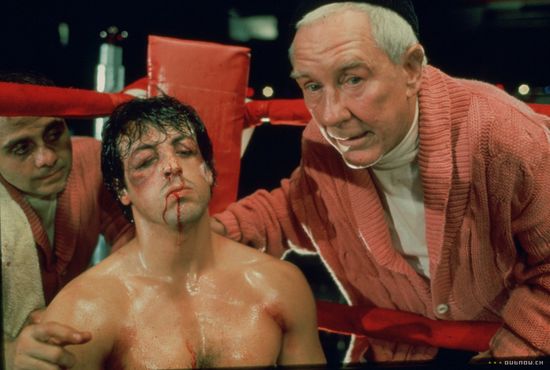
The romantic connection between Rocky and Adrian, a homely pet store clerk, is the film’s secret weapon. That Rocky has to negotiate with Adrian’s hot-tempered brother Paulie (Burt Young) in order to keep her close to him, personifies the purity of his intentions. Adrien brings out the best in Rocky, and vice versa. He can be funny around her, and she in-turn is liberated to show off her feminine side. Both characters blossom in the sweat-drenched atmosphere that Rocky provides. Bill Conti’s suggestive musical score punctuates the drama with light touches of musical embellishment.
John G. Avildsen’s career was well established by the time he directed “Rocky.” His consciously unfussy approach fits with Stallone’s straight-ahead script. Everything looks imperfect, even ugly; as well it should for the demands of the rough and tumble story at hand.
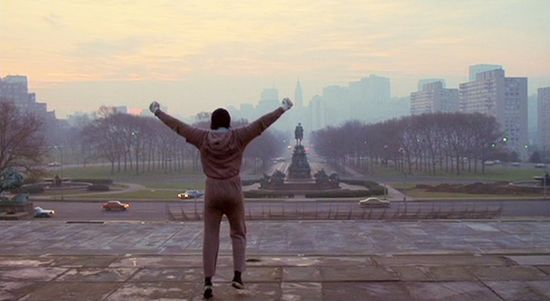
“Rocky” struck a nerve with American audiences at the time because it spoke directly to a ‘70s era lower middle-class dream of success that has since been exploded into a billion pieces. Arriving the same year as “Taxi Driver,” this iconic movie casts an oddly equal angle on the country’s sense of social deprivation after the political assassinations of the ‘60s and the authorial wipeout that followed Nixon’s impeachment behind the Watergate hearings. Rocky gets a shot at the title as much from his heritage as an Italian boxing stud as from his roughhewn skills in the ring.
Perhaps the American dream of the ‘50s is still attainable, or as least it might have been in 1976. The film’s carefully choreographed boxing sequences play second fiddle to the renowned workout sequence in which Rocky runs up the stairs of the Philadelphia Museum of Art before turning to face the city with his arms raised in a victory stance. Preparation is everything.
Rated PG. 119 mins.


